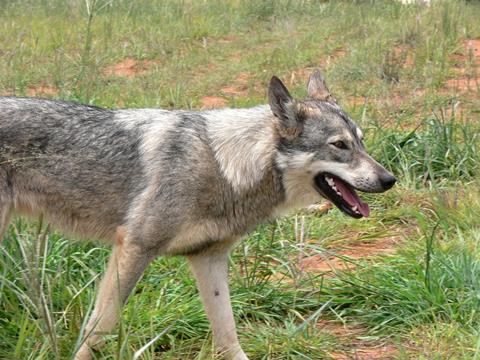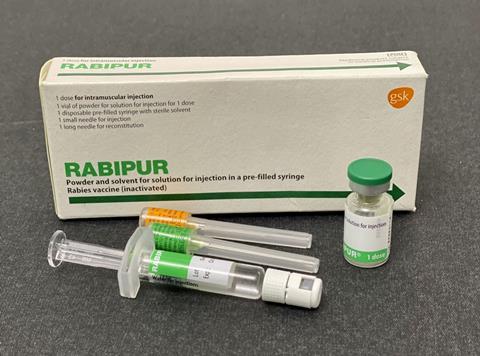World Rabies Day is celebrated each year on the 28th of September to raise awareness for rabies prevention and to shine a light on progress in defeating the disease.
Rabies is a zoonotic, viral disease that affects the central nervous system. Transmission of rabies to humans is primarily via dogs and the frequent victims are children aged between 5 to 14 years old. As well as humans and dogs, rabies can infect other mammals such as cats, livestock, and wildlife. The virus can spread to humans and animals through saliva, typically from bites, scratches, or through contact with mucosa such as the mouth, eyes, or open wounds. Once clinical symptoms of rabies present, it is almost always fatal.
Whilst many countries globally have been declared rabies-free there are still estimated to be 59,000 deaths due to rabies in over 150 countries. Of these cases, 95% occur in Asia and Africa. It’s likely that this number of cases is a vast underestimate due to underreporting.

In many parts of the world dog-mediated rabies has been controlled this includes areas such as The Americas. However, there is a risk of bat-mediated rabies which is also on the rise in areas of western Europe and Australia. These bats are hematophagous meaning they feed on blood and are the primary source of rabies in humans in these areas.
Concerningly, rabies usually has an incubation period of 2-3 months but can vary from as little as one week up to a year. This can depend on variables such as the location of virus entry e.g. where the individual was bitten, as well as the viral load. In the beginning stages of an infection with rabies, the disease presents with generic symptoms such as fever, pain, and numbness or tingling around the site of the bite or scratch. As the viral disease progresses to the central nervous system there is inflammation of the brain and spinal cord which progresses to fatality.
Rabies can manifest in two different ways. One type of rabies is furious rabies where an individual or animal will experience hyperactivity, hallucinations, aerophobia (fear of fresh air or drafts), and hydrophobia (fear of water). Death occurs quickly with a cardio-respiratory arrest typically occurring after a few days. The other is paralytic rabies where muscles surrounding the wound site will gradually become paralysed. This slowly progresses into a coma and then death. Paralytic rabies typically accounts for approximately 20% of human rabies cases and is frequently misdiagnosed which adds to the underreporting of rabies.

The key to minimising deaths due to rabies is vaccination. Louis Pasteur, a French chemist and microbiologist, developed the first Rabies vaccine. World Rabies Day occurs annually on the anniversary of Pasteur’s death (28th September). Vaccination is vital to ensure the elimination of human deaths caused by rabies. Vaccines for humans can be used to immunize individuals both before and after potential exposures to rabies and as of 2024, there are only three WHO (World Health Organization) pre-qualified rabies vaccines for humans. Previously poor-quality rabies vaccines have been rolled out in several countries which has led to failures in public health. Therefore, it is recommended by the WHO that rabies vaccines for humans comply with WHO standards.
Individuals who are at high risk of exposure to rabies such as laboratory workers or people that may come into contact with infected animals can be vaccinated for rabies. This can also be given to individuals if they are travelling to an area with high rates of rabies or if they are going to remote areas where rabies is endemic. However, even if an individual has been vaccinated with the rabies vaccine and a potentially rabid animal bites them they will need post-exposure prophylaxis. This involves washing the wound, a course of rabies vaccine, and rabies immunoglobulin or monoclonal antibodies.
There is ongoing research into antirabies therapeutics such as favipiravir, an antiviral, and the usage and development of monoclonal antibodies to treat symptomatic rabies. There has also been research on the endocannabinoid system which may have the potential to be a therapeutic target.

In addition to vaccination, awareness of rabies is also crucial to engage communities in rabies prevention. This can involve educating individuals on what to do if they have been bitten or scratched by a potential rabid animal as well as bite prevention and dog behaviour. Additionally, education on responsible pet ownership and vaccinating dogs is vastly important. The mass vaccination of dogs and puppies is the most cost-effective approach to prevent rabies in humans as this stops the source of transmission.
As urbanisation progresses and more natural environments are taken over by humans, there is an increased risk of rabies. Recently it was observed that an opossum had been infected by rabies potentially through contact with a bat. The transmission of rabies between bats to opossums may have occurred through the interaction of these animals in their natural habitat such as in treetops. However, this transmission could also have occurred via interaction in man-made habitats such as in roofs or back gardens as opossums can adapt well to urban settings. Opossums and cats can prey on bats which could also be a path of transmission. With rabies in these animals, it is very possible this can be passed along to both dogs and humans in these environments.
To mark World Rabies Day, The Donkey Sanctuary in Kenya has collaborated with local governments and partner organisations to support rabies vaccination programmes in parts of Mexico and Kenya. Whilst donkeys will be vaccinated by the charity as the communities in these areas rely on them for their livelihoods, they are also vaccinating dogs as they are the most likely form of transmission. Ultimately this programme will protect donkeys, dogs, and humans.
READ MORE: Rabies outbreaks in Costa Rica cattle linked to deforestation
READ MORE: Rabies virus variants from marmosets are found in bats
Further reading
https://www.nhs.uk/conditions/rabies/
https://www.ncbi.nlm.nih.gov/pmc/articles/PMC10819634/
https://www.sciencedirect.com/science/article/pii/S0022510X21001064





No comments yet